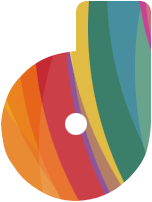RSS is really simple, why do so many find it complicated?
17 May 2024
Chris, writing at uncountable thoughts:
RSS is a pervasive, but little known, web technology that allows you aggregate all your content into one place for easy reading. There are very few websites without an RSS feed, although many don’t advertise the link (or, even realise they have it).
When you put an RSS feed link into your RSS, it is called “subscribing”. But don’t worry — it’s totally free, and you don’t give your email address.
Really Simple Syndication (RSS) is really simple. But a lot of people don’t see it that way, and anyone who has ever syndicated their web content, has always struggled to convince their readers of that. Like, probably since RSS arrived in March 1999. Yet RSS almost had its moment, during the so-called golden age of blogging, circa 2003 to 2010.
Writers took to writing blogs, and readers took to reading blogs. Content Management Systems like WordPress churned out RSS feeds automatically. All a blogger had do was prominently post a link to their RSS feed. Really simple. Writing posts explaining what RSS was, and why it was useful, was also common. Erstwhile (by the looks of it) Australian blogger Meg Tsiamis, of (defunct) Top 100 Australian Blogs Index fame, wrote a post in 2007, outlining RSS to her mother, and other of her readers.
Sadly, the more in-depth resource she linked to, is no longer online. In other words though, we’ve been trying for years, decades, to impress upon others the simplicity and function of RSS, but too little, or no, avail. Unfortunately RSS plain simply baffled just about anyone, and everyone, who didn’t write a blog. RSS was too technical, too geeky, many people complained.
But popular perceptions of RSS were only one problem. Accessing RSS easily was another. Some argued Google closing down their popular RSS reader, er, Google Reader (which I never used), in 2013, sounded the death knell of RSS. But the real problem had always been one of uptake, or rather, lack of uptake. Geekiness aside, some people questioned the purpose of RSS in the first place.
I recall, in 2014, trying to explain the utility of RSS to a co-member of a small business coffee meeting group I was then part of. I pulled out my laptop at the cafe we gathered at one morning, and showed him my RSS reader of the time (NewsGator, I think). “Look, see, you only have to visit one website to read one hundred websites,” I said, as I scrolled through my subscription list.
He marvelled as he looked on, recognising a number of websites he visited regularly. “All you need do is get a RSS reader app, like the one we’re looking at now, subscribe to the RSS feeds you like, and you’re set,” I said. Despite my small presentation though, he still looked confused. He didn’t seem to understand why you’d stop visiting a website, to read its content elsewhere.
Oh, the frustration.
Today RSS is even simpler. No apps are needed, one only has to create an account through a RSS aggregator website, Feedly for example (free for a basic account), and start subscribing. You don’t even need to know the URL of a website’s RSS feed. Type in the regular URL, and Feedly will search for available feeds.
Subscribing to an RSS feed is really the same as following someone on Instagram (IG). And it’s just as simple. Choose an IG page you want to follow, and tap the follow button. With RSS though, instead of following, you’re subscribing, although some RSS aggregators call the process following.
Better still, and as is often reported elsewhere, your subscription is anonymous (you could follow my RSS feed, and I’d have no idea unless you told me), and you only see the content you want to. There are no algorithms, or annoying “suggested for you” content. How good is that?
Well, not good enough, perhaps. Until subscribing to a RSS feed literally becomes as easy as following someone on social media, selling RSS as a really simple way of following a website, will, unfortunately, remain a hard sell.
RELATED CONTENT
blogs, RSS, technology, trends
